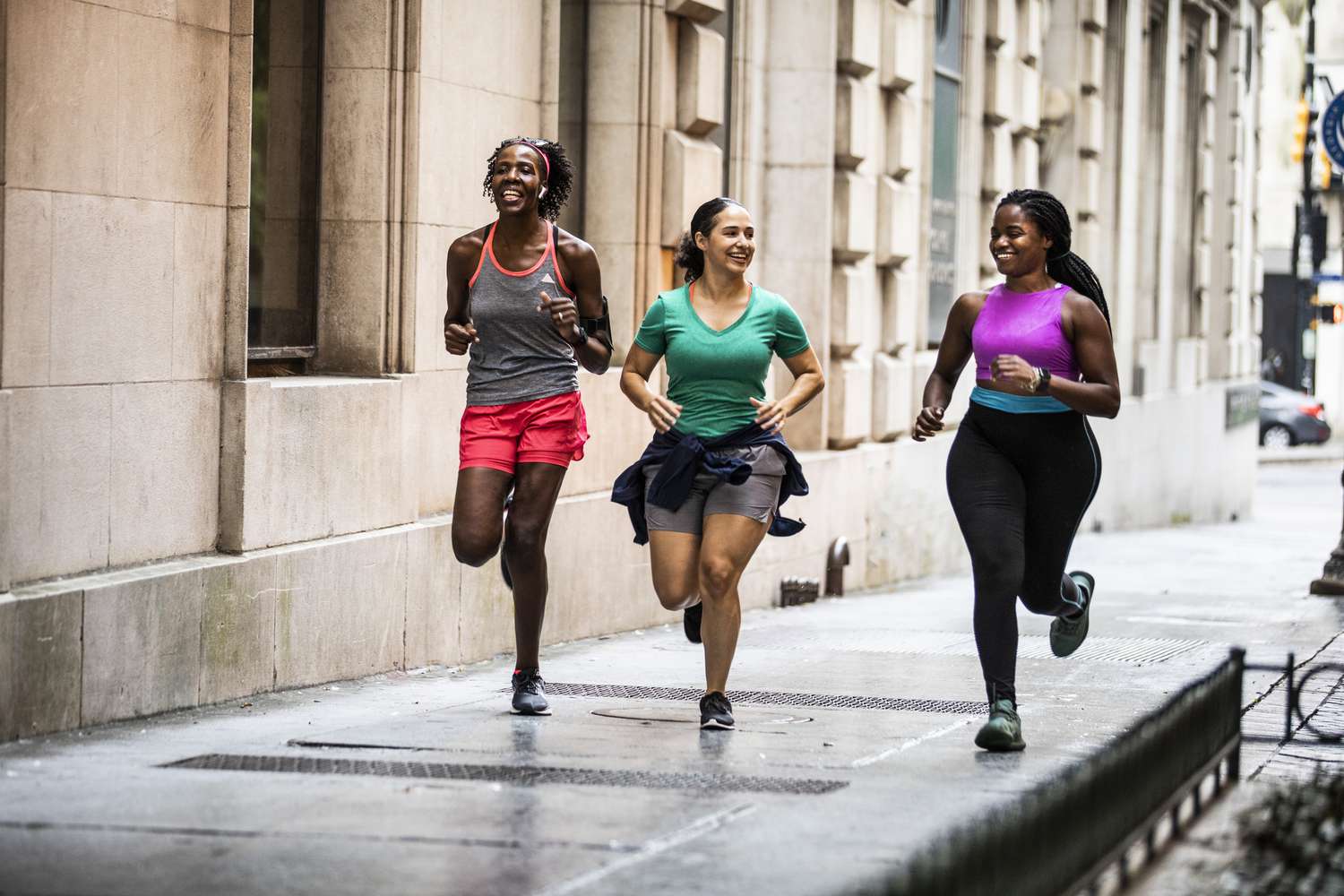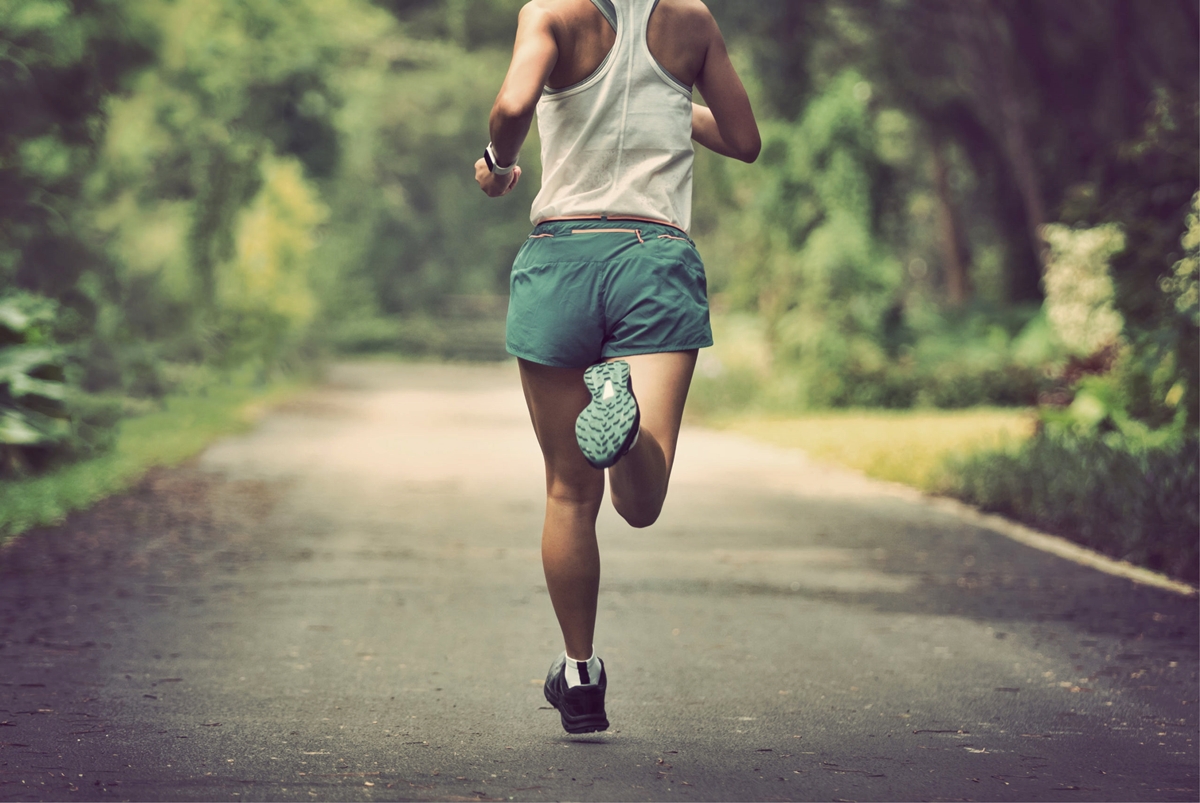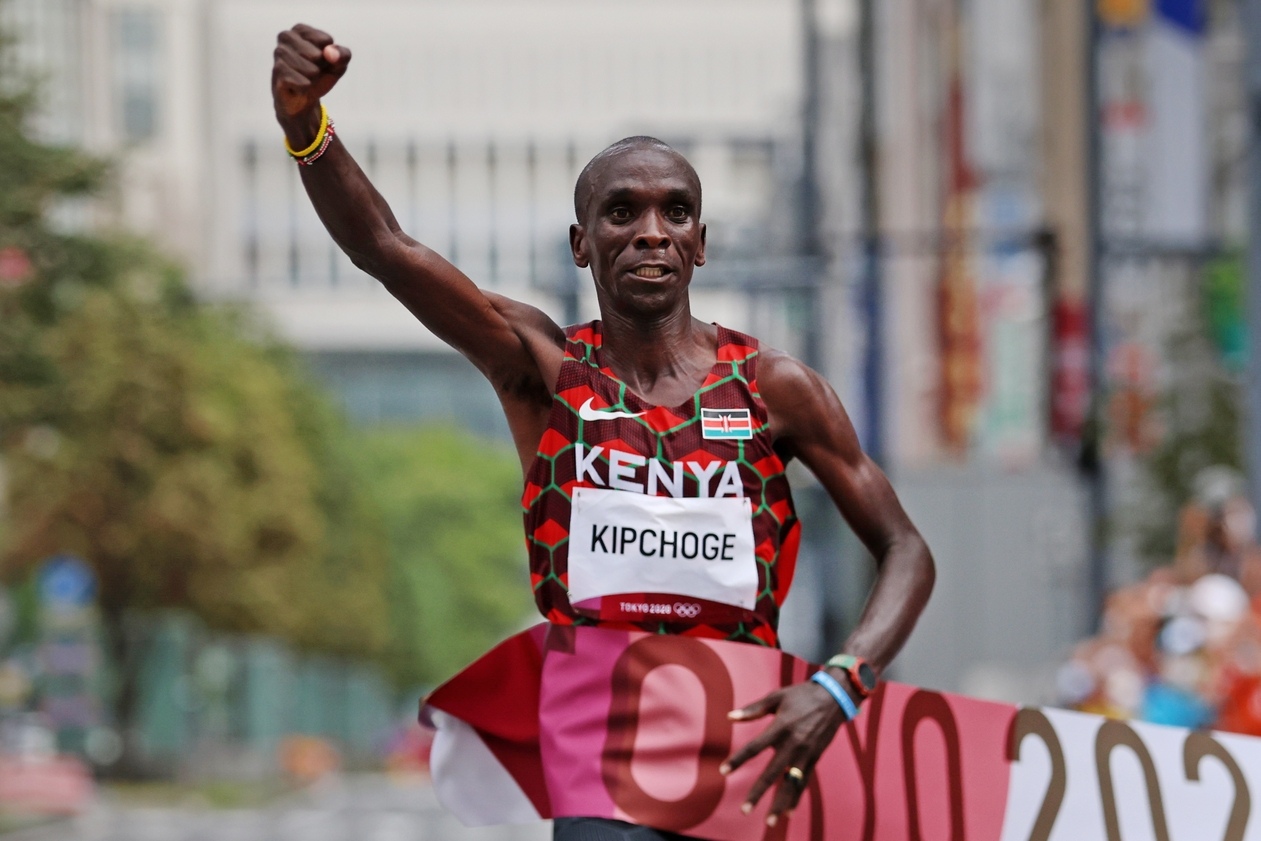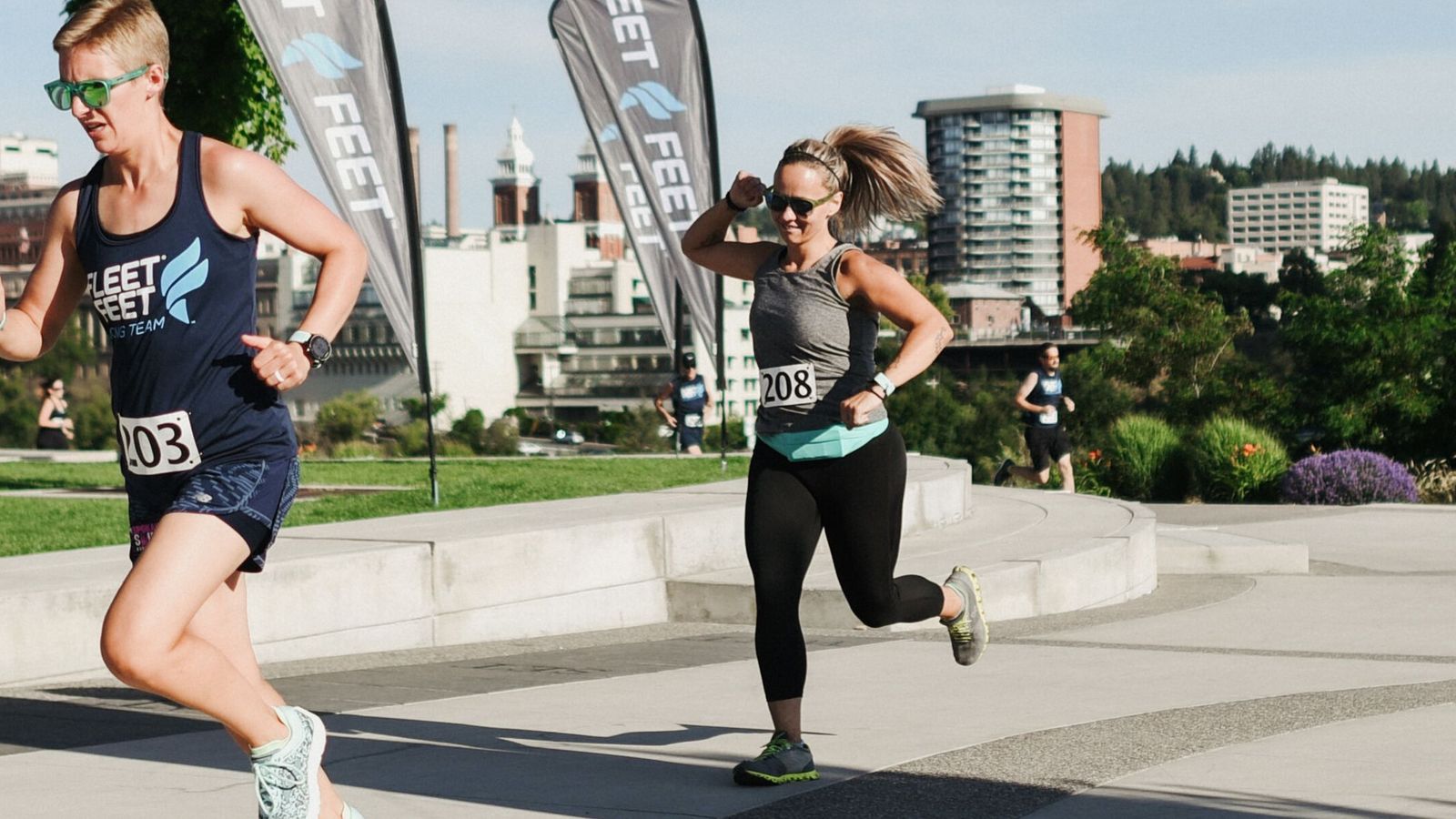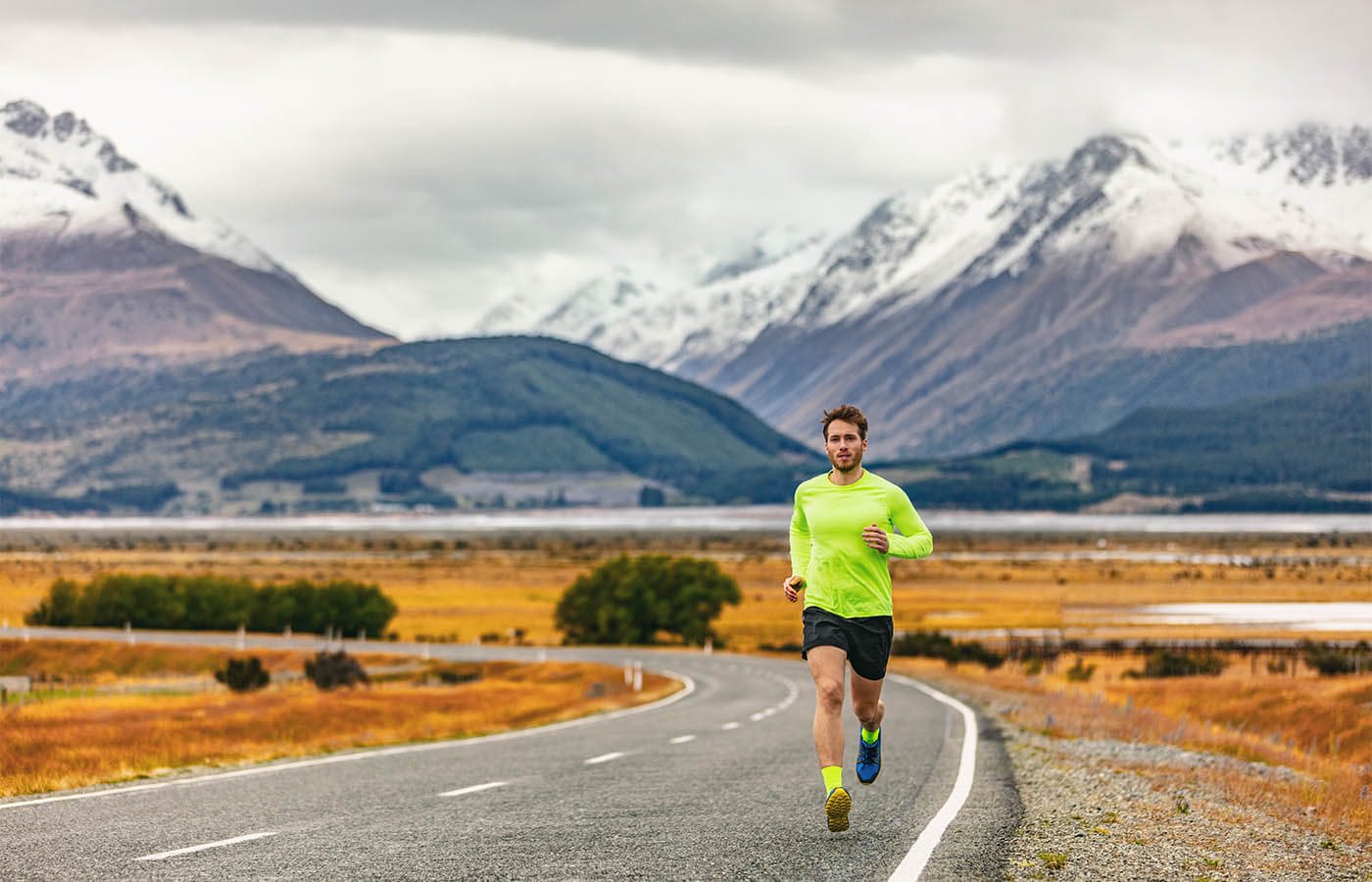Home>Misc>Featured>How To Start Training For Long Distance Running With Paleo Diet
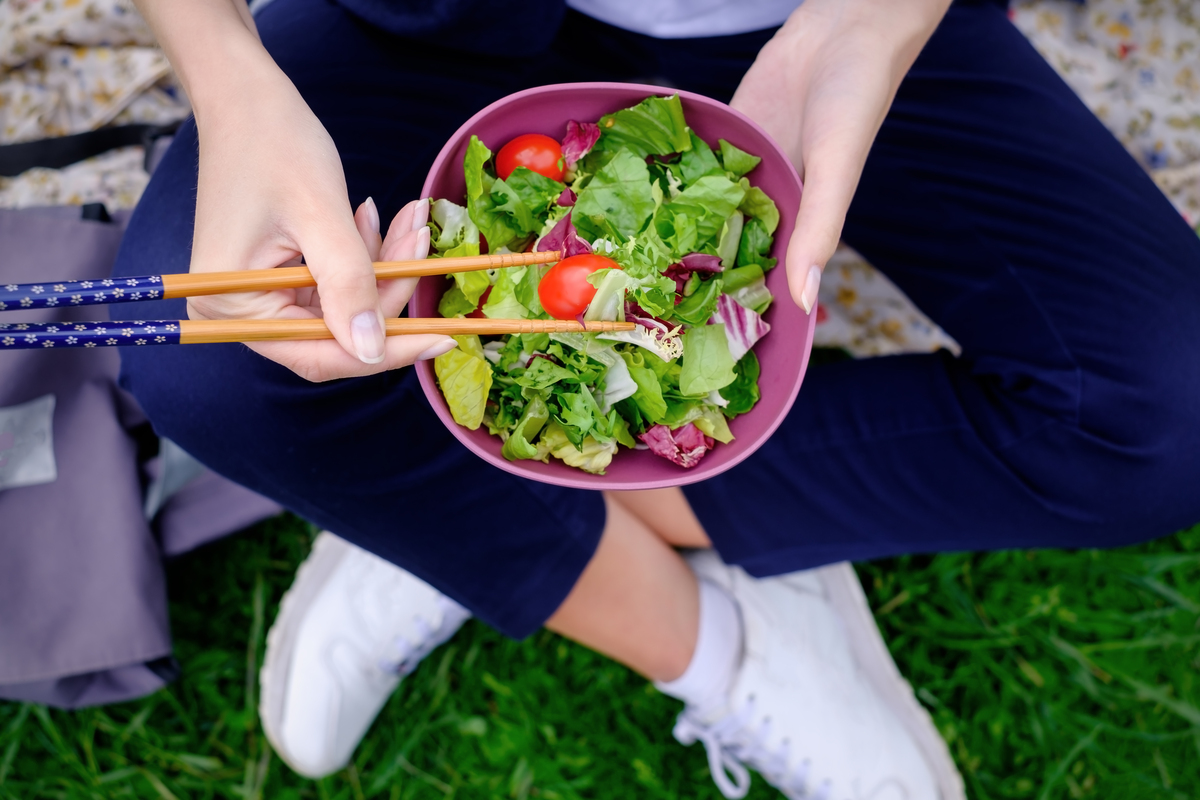

Featured
How To Start Training For Long Distance Running With Paleo Diet
Modified: August 19, 2023
Discover how to start training for long distance running with the featured Paleo diet and maximize your performance. Transform your running game with this effective nutritional approach.
Introduction
Embarking on the journey of long-distance running requires dedication, discipline, and proper nutrition. As you train and push your body to reach new limits, it becomes crucial to fuel yourself with the right foods for optimal performance and recovery. One diet that has gained popularity among athletes is the Paleo diet.
The Paleo diet, also known as the caveman diet or ancestral diet, is based on consuming foods that our ancestors ate during the Paleolithic era. This means focusing on whole, unprocessed foods such as lean meats, fish, fruits, vegetables, nuts, and seeds while avoiding processed foods, grains, dairy, and legumes.
So, why is the Paleo diet an excellent choice for long-distance runners? In this article, we will explore the benefits of following a Paleo diet for long-distance running, provide tips on how to transition to this dietary approach, and discuss essential nutrients and hydration strategies for maximizing your training.
Whether you are a seasoned runner or just starting your journey, incorporating the Paleo diet into your training can help improve your overall health, enhance your performance, and support your body’s recovery process.
So, lace up your running shoes and let’s dive into how to start training for long-distance running with the Paleo diet.
What is a Paleo Diet?
The Paleo diet is a dietary approach that seeks to mimic the eating habits of our ancestors during the Paleolithic era. The primary focus is on consuming natural, whole foods that our bodies are genetically adapted to process, such as lean meats, fish, fruits, vegetables, nuts, and seeds.
The philosophy behind the Paleo diet is that our bodies have evolved to thrive on the simple and unprocessed foods available to our ancestors. By eliminating modern processed foods, grains, dairy, and legumes, proponents of the Paleo diet argue that we can improve digestion, reduce inflammation, and achieve better overall health.
One of the key principles of the Paleo diet is to avoid processed foods. This includes items like refined sugars, vegetable oils, artificial additives, and preservatives that are commonly found in packaged and processed foods. By focusing on whole foods, the Paleo diet aims to provide the body with the essential nutrients it needs to function optimally.
In addition to promoting overall health, the Paleo diet can also have specific benefits for athletes, especially long-distance runners. The emphasis on lean proteins, nutrient-rich fruits and vegetables, and healthy fats can support muscle recovery, reduce inflammation, and provide sustained energy for training and racing.
While the Paleo diet does exclude certain food groups like grains, legumes, and dairy, it doesn’t mean you have to miss out on essential nutrients. By selecting a wide variety of nutrient-dense foods within the permitted categories, you can still obtain all the necessary vitamins, minerals, and macronutrients for optimal performance.
Now that we have a basic understanding of the Paleo diet, let’s explore the specific benefits it provides for long-distance runners.
Benefits of a Paleo Diet for Long Distance Running
The Paleo diet offers several benefits for long-distance runners, helping to support their training, performance, and recovery. Here are some of the key advantages:
- Improved Energy Levels: The focus on whole, unprocessed foods in the Paleo diet provides a steady supply of energy throughout the day, which is essential for long-distance running. By avoiding processed carbohydrates and refined sugars, you can avoid energy crashes and maintain stable blood sugar levels.
- Reduced Inflammation: Many processed foods and grains can contribute to inflammation in the body, leading to slower recovery and increased risk of injury. The Paleo diet, with its emphasis on anti-inflammatory foods like fatty fish, nuts, and leafy greens, can help reduce inflammation, allowing for quicker recovery and improved performance.
- Supports Muscle Recovery: Including lean proteins in the Paleo diet helps support muscle repair and growth. Adequate protein intake is crucial for repairing the micro-tears in muscles that occur during long-distance running. Sources like lean meats, poultry, fish, and eggs are excellent options for replenishing protein levels.
- Enhanced Nutrient Density: The Paleo diet encourages the consumption of nutrient-dense foods such as fruits and vegetables, which are rich in vitamins, minerals, and antioxidants. These essential nutrients help to support overall health, strengthen the immune system, and provide necessary building blocks for the body’s physiological processes.
- Stable Blood Sugar Levels: By avoiding refined sugars and processed carbohydrates, the Paleo diet helps stabilize blood sugar levels. This is crucial for long-distance runners, as fluctuations in blood sugar can lead to energy crashes and hinder performance.
- Weight Management: The Paleo diet, when combined with regular exercise, can aid in weight management. The emphasis on whole, unprocessed foods helps control calorie intake and reduce reliance on calorie-dense processed foods, contributing to a healthy body weight.
By following a Paleo diet, long-distance runners can reap these benefits and optimize their training and performance. However, it’s essential to transition to this dietary approach gradually and ensure you are meeting all your nutritional needs.
How to Transition to a Paleo Diet
Transitioning to a Paleo diet may seem challenging, especially if you are used to consuming processed foods and grains. However, with careful planning and a gradual approach, you can successfully make the switch. Here are some tips to help you transition to a Paleo diet:
- Educate Yourself: Before starting the transition, take the time to learn about the key principles and guidelines of the Paleo diet. Understand the foods that are included and excluded, as well as the reasoning behind these choices.
- Start Slowly: Instead of making abrupt changes, ease into the Paleo diet gradually. Begin by eliminating processed foods and sugary beverages from your diet and gradually reduce your consumption of grains, dairy, and legumes.
- Focus on Whole Foods: Emphasize whole, unprocessed foods in your meals, such as lean meats, fish, fruits, vegetables, nuts, and seeds. These should form the foundation of your diet, providing essential nutrients and energy for your training.
- Plan Your Meals: Take time to plan and prepare your meals in advance. This will help you stay on track and ensure you have Paleo-friendly options readily available. Include a variety of colorful fruits and vegetables in your meals to obtain a wide range of nutrients.
- Experiment with New Ingredients: Explore different recipes and ingredients that align with the Paleo diet. Experiment with alternative flours like almond flour and coconut flour, and substitute dairy with coconut milk or nut milk.
- Seek Support: Find a community or support group of individuals following the Paleo diet. Sharing experiences, recipes, and challenges with others can provide motivation and guidance throughout your transition.
- Be Mindful of Nutrient Intake: While the Paleo diet is inherently nutrient-dense, it’s essential to ensure you are meeting all your nutritional needs. Pay attention to your intake of essential nutrients like omega-3 fatty acids, calcium, and vitamin D. Consider supplementing if necessary.
- Listen to Your Body: As with any dietary change, it’s crucial to listen to your body and make adjustments accordingly. Everyone is different, and what works for one person may not work for another. Pay attention to how you feel, your energy levels, and overall well-being.
Remember, the transition to a Paleo diet takes time and patience. Be kind to yourself and focus on progress rather than perfection. With consistency and a balanced approach, you can successfully incorporate the Paleo diet into your training regimen.
Essential Nutrients for Long Distance Runners on a Paleo Diet
When following a Paleo diet as a long-distance runner, it’s important to ensure you are getting all the essential nutrients your body needs for optimal performance and recovery. While the Paleo diet promotes whole, nutrient-dense foods, there are a few key nutrients to pay special attention to:
- Protein: Protein is crucial for long-distance runners as it helps repair and build muscle tissue. Good sources of protein on a Paleo diet include lean meats like chicken, turkey, and grass-fed beef, as well as fish, eggs, and nuts.
- Healthy Fats: Healthy fats provide a concentrated source of energy and support vital functions in the body. Incorporate sources like avocados, olive oil, coconut oil, nuts, and seeds into your meals to ensure an adequate intake of healthy fats.
- Carbohydrates: While the Paleo diet emphasizes whole foods and limits refined carbohydrates, carbohydrates are still necessary for providing fuel during long-distance running. Focus on consuming carbohydrates from sources like fruits, sweet potatoes, and root vegetables.
- Vitamins and Minerals: Fruits and vegetables in a variety of colors should be a staple in your Paleo diet to ensure you are getting a wide array of essential vitamins and minerals. These include vitamin C, vitamin A, potassium, magnesium, and iron.
- Calcium: Since dairy is not included in the Paleo diet, it’s important to find alternative sources of calcium. Incorporate leafy greens, canned fish with bones (such as salmon or sardines), and almonds to ensure an adequate calcium intake.
- Iron: Long-distance runners are at higher risk of iron deficiency due to increased iron losses through sweat and foot impact. Include iron-rich foods like lean red meat, spinach, lentils, and pumpkin seeds to meet your iron needs.
- Omega-3 Fatty Acids: Omega-3 fatty acids have anti-inflammatory properties and are important for cardiovascular health. Include fatty fish like salmon, mackerel, and sardines in your diet, or consider incorporating a high-quality fish oil supplement.
- Hydration: While not a nutrient per se, proper hydration is essential for optimal performance. Drink sufficient water throughout the day and consider consuming electrolyte-rich fluids such as coconut water during long runs.
By focusing on these key nutrients, you can ensure that you are fueling your body properly and providing it with the necessary building blocks for long-distance running on a Paleo diet.
Preparing Paleo Meals for Long Distance Running
Preparing Paleo meals for long-distance running requires careful planning and consideration to ensure you are meeting your nutritional needs and fueling your body effectively. Here are some tips to help you prepare balanced and nourishing Paleo meals:
- Protein-rich Foods: Include a serving of lean protein in each meal to support muscle recovery and growth. Incorporate sources like grilled chicken, turkey, fish, eggs, or tofu for vegetarian options.
- Colorful Fruits and Vegetables: Aim to fill your plate with a variety of colorful fruits and vegetables to provide essential vitamins, minerals, and antioxidants. Include leafy greens, berries, bell peppers, broccoli, and sweet potatoes to maximize your nutrient intake.
- Healthy Fats: Add a source of healthy fats to your meals to provide sustained energy and support overall health. Include foods like avocados, olive oil, coconut oil, nuts, and seeds. These can be incorporated into salads, stir-fries, or as toppings for roasted vegetables.
- Complex Carbohydrates: While the Paleo diet limits refined carbohydrates, it is important to include complex carbohydrates to fuel your long-distance runs. Incorporate sources like sweet potatoes, plantains, quinoa, or butternut squash.
- Snacks for Energy: Prepare nutritious snacks that you can easily grab and go for sustained energy during your runs. Options like homemade energy bars using nuts and dried fruits, nut butter with apple slices, or homemade trail mix can provide a quick and convenient energy boost.
- Pre- and Post-Workout Meals: Make sure to fuel yourself properly before and after your long-distance runs. Before a run, consume a balanced meal with a combination of protein and carbohydrates to provide energy and support endurance. After a run, prioritize replenishing your glycogen stores with a meal that includes protein and carbohydrates to aid in muscle recovery.
- Hydration: Don’t forget about proper hydration. Drink sufficient water throughout the day, and consider incorporating electrolyte-rich fluids like coconut water during and after your runs to replenish lost electrolytes.
- Meal Prep: Plan and prepare your meals in advance to ensure you have Paleo-friendly options readily available. Batch cook proteins, roast vegetables, and portion out meals for the week. This will help you save time and stay on track with your dietary goals.
Experiment with different recipes and flavors to keep your meals interesting and enjoyable. Don’t be afraid to try new ingredients or adapt traditional recipes to fit your Paleo diet. With proper meal planning and preparation, you can nourish your body effectively and optimize your long-distance running performance.
Hydration and Electrolyte Balance for Long Distance Running on a Paleo Diet
Proper hydration and electrolyte balance are vital for long-distance runners, even on a Paleo diet. Staying hydrated and maintaining electrolyte levels can help prevent dehydration, muscle cramps, and fatigue. Here are some tips to ensure you maintain optimal hydration and electrolyte balance on your long-distance runs:
- Drink Plenty of Water: Make sure to drink water regularly throughout the day to stay hydrated. Aim for at least 8-10 cups of water per day, or more if you are training intensely or running in hot weather.
- Monitor Sweat Loss: Assess your sweat rate during runs to determine how much fluid you need to replenish. Weigh yourself before and after a run to estimate how much water weight you’ve lost. Drink 16-24 ounces of water for each pound lost.
- Consider Coconut Water: Coconut water is a natural electrolyte-rich drink that can help replenish lost electrolytes during long runs. It provides essential minerals like potassium, magnesium, and sodium, which are important for muscle function and hydration.
- Pre-Run Hydration: Consume water or a sports drink with electrolytes in the hours leading up to your long-distance run. This ensures you start your run properly hydrated and reduces the risk of dehydration during exercise.
- During-Run Hydration: Drink water or a sports drink with electrolytes during your long-distance runs to replenish fluids and maintain electrolyte balance. Experiment with different methods of hydration, such as handheld water bottles, hydration vests, or waist belts with water bottles, to find what works best for you.
- Post-Run Hydration and Recovery: After your long-distance runs, continue to rehydrate by consuming water or a recovery drink that includes electrolytes. This helps restore fluid balance and supports the recovery process.
- Electrolyte-Rich Foods: Include electrolyte-rich foods in your meals and snacks to support electrolyte balance. Foods like bananas, oranges, sweet potatoes, leafy greens, and nuts are naturally rich in electrolytes and can be incorporated into your Paleo diet.
- Avoid Overhydration: While it’s important to stay hydrated, be mindful not to overhydrate. Drinking excessive amounts of water without replenishing electrolytes can lead to a condition called hyponatremia, where sodium levels in the blood become dangerously low. Balance your fluid intake with adequate electrolyte consumption.
Remember, individual hydration needs can vary, so it’s essential to listen to your body and adjust your fluid intake accordingly. Pay attention to signs of dehydration or overhydration, such as excessive thirst, dry mouth, dark urine, or bloating.
By prioritizing proper hydration and electrolyte balance, you can help support optimal performance, endurance, and recovery during your long-distance runs on a Paleo diet.
Tips for Long Distance Running Training with a Paleo Diet
Training for long-distance running requires careful planning and consideration of your dietary needs. If you’re following a Paleo diet, here are some tips to help you navigate your training while fueling your body effectively:
- Plan Balanced Meals: Ensure each meal contains a balance of lean protein, healthy fats, and complex carbohydrates. This combination provides sustained energy, helps repair muscle tissue, and supports overall performance.
- Include Adequate Fiber: While the Paleo diet naturally includes fiber-rich fruits and vegetables, make sure you’re incorporating enough dietary fiber to support digestion and promote satiety. Examples include chia seeds, flaxseeds, and cruciferous vegetables.
- Timing of Pre-Run Meals: Give your body enough time to digest and absorb nutrients before a long run. Aim to eat a balanced meal at least 2-3 hours before your run to avoid discomfort and allow for proper digestion.
- Pre- and Post-Run Snacks: For longer runs, consider consuming a small pre-run snack and a post-run snack to provide a quick source of energy and aid in recovery. Opt for easily digestible options such as a banana, a handful of nuts, or a homemade energy bar.
- Experiment with Fueling Strategies: During your long runs, experiment with different Paleo-friendly fueling options to find what works best for you. This can include portable snacks like dates, dried fruit, or homemade energy gels made with natural ingredients.
- Replenish Electrolytes: In addition to hydration, make sure you’re replenishing electrolytes lost through sweat. Consume electrolyte-rich foods and consider natural options like coconut water or homemade electrolyte drinks.
- Listen to Your Body: Pay attention to how your body responds to the Paleo diet and adjust your intake as needed. Everyone’s nutritional needs and tolerance vary, so listen to your body’s cues and make adjustments accordingly.
- Monitor Performance and Recovery: Keep track of your training progress, performance, and recovery. If you notice any changes or challenges, consult with a healthcare professional or registered dietitian who can provide personalized guidance.
- Stay Consistent: Consistency is key with both your training and dietary approach. Stick to your Paleo diet and training routine, and be patient with the results. Long-distance running is a gradual process, and it takes time to build endurance and see improvements.
Remember, it’s important to fuel your body properly and listen to its needs as you train for long-distance running. Everyone’s nutritional needs may differ, so finding the right balance and adjusting your approach based on your individual needs and goals is essential.
By following these tips and staying dedicated to your training and nutrition, you can support your running performance and enhance your overall long-distance running experience on a Paleo diet.
Common Mistakes to Avoid when Training for Long Distance Running with a Paleo Diet
Training for long-distance running while following a Paleo diet can provide numerous benefits, but it’s important to be mindful of potential mistakes that could hinder your progress. Here are some common mistakes to avoid:
- Not Eating Sufficient Carbohydrates: While the Paleo diet limits grains and refined carbohydrates, it’s crucial to include enough complex carbohydrates to fuel your long-distance runs. Insufficient carbohydrate intake can lead to low energy levels and decreased performance. Include carbohydrate-rich foods like sweet potatoes, fruits, and root vegetables in your diet.
- Neglecting Hydration: Hydration is key for long-distance running, and proper fluid intake is essential for performance and recovery. Avoid the mistake of not drinking enough water or electrolyte-rich fluids during your runs. Listen to your body’s thirst signals and monitor your sweat rate to ensure adequate hydration.
- Not Balancing Macronutrients: A balanced intake of macronutrients (protein, fats, and carbohydrates) is crucial for long-distance runners. Avoid the mistake of focusing too heavily on one macronutrient at the expense of others. Ensure each meal contains a balance of all three to support optimal performance and recovery.
- Overeating or Undereating: It’s important to listen to your body’s hunger and fullness cues and eat accordingly. Avoid the mistake of overeating, as this can lead to discomfort during runs, or undereating, which can hinder your performance and recovery. Strive for a balanced approach and eat until you feel satisfied.
- Ignoring Micronutrient Needs: While the Paleo diet provides a good foundation of essential nutrients, it’s important not to overlook specific micronutrients that are crucial for long-distance runners. Pay attention to your intake of iron, calcium, vitamin D, and omega-3 fatty acids. Consider incorporating supplements if necessary or consult with a registered dietitian to ensure you’re meeting your nutritional needs.
- Over-Reliance on Processed Paleo Foods: While there are many convenient and packaged “Paleo-friendly” foods available, be cautious about relying too heavily on them. Many of these products may still be processed and lack the nutrient density of whole, unprocessed foods. Focus on incorporating whole foods into your diet as much as possible.
- Neglecting Post-Run Recovery: Proper recovery after your long runs is crucial for muscle repair and replenishment. Avoid the mistake of neglecting post-run nutrition, such as consuming a mix of protein and carbohydrates to aid in recovery. Plan for a nutritious meal or snack within an hour of finishing your run.
- Comparison and Impatience: Long-distance running is a journey that requires patience and commitment. Avoid the mistake of comparing your progress to others and feeling discouraged. Focus on your own improvements and be patient with the process. Consistency and gradual progress will yield long-lasting results.
Avoiding these common mistakes will help you maximize the benefits of long-distance running while following a Paleo diet. Remember, it’s essential to listen to your body, maintain a balanced approach, and seek guidance from healthcare professionals or registered dietitians when needed.
Conclusion
Incorporating the Paleo diet into your long-distance running training can provide several benefits for your overall health, performance, and recovery. By focusing on whole, unprocessed foods and avoiding grains, dairy, and legumes, you can optimize your nutrient intake, reduce inflammation, and support your body’s needs during intense training.
Transitioning to a Paleo diet requires careful planning and mindful consideration of essential nutrients. By including lean proteins, healthy fats, complex carbohydrates, and a variety of fruits and vegetables, you can ensure your body has the fuel it needs to perform at its best.
Hydration and electrolyte balance are also crucial for long-distance running success. Drinking adequate water, replenishing lost electrolytes, and listening to your body’s needs will help you stay properly hydrated and avoid issues like dehydration and muscle cramps.
It’s important to avoid common mistakes such as not consuming sufficient carbohydrates, neglecting hydration, or over-reliance on processed Paleo foods. Striving for a balanced approach, listening to your body’s cues, and being patient with your progress will lead to long-term success.
Remember, everyone’s nutritional needs vary, so it’s important to listen to your body and make adjustments as needed. Consulting with a registered dietitian or healthcare professional can provide personalized guidance and support throughout your long-distance running journey on a Paleo diet.
Embrace the benefits that the Paleo diet can bring to your long-distance running training. Through proper nutrition, hydration, and training, you’ll be well-equipped to take on the challenges of long-distance running and achieve your goals while nourishing your body with nutrient-rich, whole foods.
